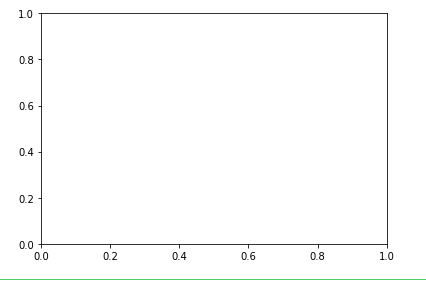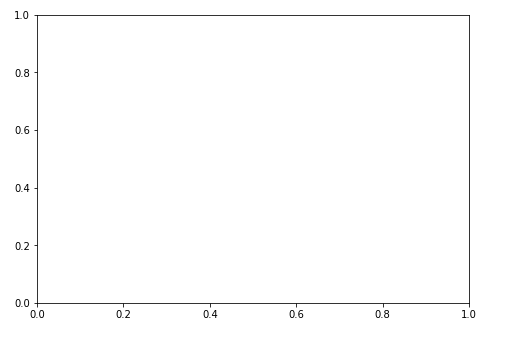Matplotlib – 轴类
Matplotlib是用于数据可视化的Python包之一。您可以使用 NumPy 库将数据转换为Python的数组和数值数学扩展。 Matplotlib 库用于从数组中的数据制作二维图。
轴类
轴是创建子图的最基本和最灵活的单元。轴允许将绘图放置在图中的任何位置。一个给定的图形可以包含许多轴,但一个给定的轴对象只能在一个图形中。轴包含两个 2D 轴对象以及 3D 情况下的三轴对象。让我们看一下这个类的一些基本功能。
轴()函数
axes()函数使用参数创建轴对象,其中参数是 4 个元素的列表 [左、下、宽、高]。现在让我们简要了解一下axes()函数。
句法 :
axes([left, bottom, width, height])例子:
import matplotlib.pyplot as plt
fig = plt.figure()
#[left, bottom, width, height]
ax = plt.axes([0.1, 0.1, 0.8, 0.8])
输出:

在axes([0.1, 0.1, 0.8, 0.8])中,第一个'0.1'是指图形窗口左侧轴与边框之间的距离为图形窗口总宽度的 10%。第二个“0.1”是指底边轴与图形窗口边框的距离为图形窗口总高度的10%。第一个“0.8”表示从左到右的轴宽度为 80%,后一个“0.8”表示从底部到顶部的轴高度为 80%。
add_axes()函数
或者,您也可以通过调用add_axes()方法将坐标区对象添加到图窗中。它返回轴对象并在 [left, bottom, width, height] 位置添加轴,其中所有数量都是图形宽度和高度的分数。
句法 :
add_axes([left, bottom, width, height])例子 :
import matplotlib.pyplot as plt
fig = plt.figure()
#[left, bottom, width, height]
ax = fig.add_axes([0, 0, 1, 1])
输出:

ax.legend()函数
可以通过调用轴类的legend()函数来为绘图添加图例。它由三个参数组成。
句法 :
ax.legend(handles, labels, loc)其中label是指一系列字符串和handles ,一系列 Line2D 或 Patch 实例, loc可以是指定图例位置的字符串或整数。
例子 :
import matplotlib.pyplot as plt
fig = plt.figure()
#[left, bottom, width, height]
ax = plt.axes([0.1, 0.1, 0.8, 0.8])
ax.legend(labels = ('label1', 'label2'),
loc = 'upper left')
输出:

ax.plot()函数
坐标轴类的plot()函数将一个数组的值与另一个数组的值绘制为线或标记。
Syntax : plt.plot(X, Y, ‘CLM’)
Parameters:
X is x-axis.
Y is y-axis.
‘CLM’ stands for Color, Line and Marker.
注意:线条可以有不同的样式,例如虚线(':') 、虚线('—') 、实线('-')等等。
标记代码
| Characters | Description |
|---|---|
| ‘.’ | Point Marker |
| ‘o’ | Circle Marker |
| ‘+’ | Plus Marker |
| ‘s’ | Square Marker |
| ‘D’ | Diamond Marker |
| ‘H’ | Hexagon Marker |
示例:以下示例显示了正弦和余弦函数的图形。
import matplotlib.pyplot as plt
import numpy as np
X = np.linspace(-np.pi, np.pi, 15)
C = np.cos(X)
S = np.sin(X)
# [left, bottom, width, height]
ax = plt.axes([0.1, 0.1, 0.8, 0.8])
# 'bs:' mentions blue color, square
# marker with dotted line.
ax1 = ax.plot(X, C, 'bs:')
#'ro-' mentions red color, circle
# marker with solid line.
ax2 = ax.plot(X, S, 'ro-')
ax.legend(labels = ('Cosine Function',
'Sine Function'),
loc = 'upper left')
ax.set_title("Trigonometric Functions")
plt.show()
输出: 
在评论中写代码?请使用 ide.geeksforgeeks.org,生成链接并在此处分享链接。